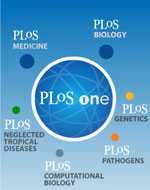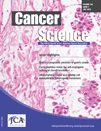Euro Urol:新检测方法或可预测前列腺癌
2012-07-20 T.Shen 生物谷
近日,来自美国加州大学圣地亚哥医学院的研究者Karim Kader与维克森林大学的研究者共同合作研究发明出了一种遗传测试法来预测男性的前列腺癌风险,使用此方法可以减少男性活组织检测阴性结果的复检试验需要。相关研究成果刊登在了国际杂志European Urology上。 研究者Kader表示,在研究癌症风险上,遗传检测远胜于PSA检测法。文章中,研究者评估了1654个男性在前列腺癌实验中度他雄胺用
近日,来自美国加州大学圣地亚哥医学院的研究者Karim Kader与维克森林大学的研究者共同合作研究发明出了一种遗传测试法来预测男性的前列腺癌风险,使用此方法可以减少男性活组织检测阴性结果的复检试验需要。相关研究成果刊登在了国际杂志European Urology上。
研究者Kader表示,在研究癌症风险上,遗传检测远胜于PSA检测法。文章中,研究者评估了1654个男性在前列腺癌实验中度他雄胺用量减少的试验结果,而且所有男性都进行了活组织检测,并且都同意进行遗传学研究,寻找其种系单核苷酸多态性(SNPs)的存在。SNPs是个体DNA序列的遗传变异,这和前列腺癌甚至是慢性疾病有着正向的关系。
避免了重复的检测步骤,尤其是对老年人来说,新的检测方法可以帮助患者降低感染风险以及潜在的医院住院可能性。所得到的遗传分值对于男性在任何时间都是可用的,而且可以被用于进行初筛实验。
在男性的一生中,6个人中会有一个人进行相关的前列腺癌诊断。2012年,超过了241,700个前列腺癌男性患者使用了新的检测方法进行检测,在病人诊断的过程中,超过了100万的患者每年只需要进行活组织检查即可。相关研究成果由国立癌症研究中心支持。
编译自:New Test May Help Predict Prostate Cancer

PMC:
PMID:
Potential Impact of Adding Genetic Markers to Clinical Parameters in Predicting Prostate Biopsy Outcomes in Men Following an Initial Negative Biopsy: Findings from the REDUCE Trial
A. Karim Kader, Jielin Sun, Brian H. Reck, Paul J. Newcombe, Seong-Tae Kim, Fang-Chi Hsu, Ralph B. D’Agostino Jr., Sha Tao, Zheng Zhang, Aubrey R. Turner, Greg T. Platek, Colin F. Spraggs, John C. Whittaker, Brian R. Lane, William B. Isaacs, Deborah A. Meyers, Eugene R. Bleecker, Frank M. Torti, Jeffery M. Trent, John D. McConnell, S. Lilly Zheng, Lynn D. Condreay, Roger S. Rittmaster, Jianfeng Xu.
Background Several germline single nucleotide polymorphisms (SNPs) have been consistently associated with prostate cancer (PCa) risk. Objective To determine whether there is an improvement in PCa risk prediction by adding these SNPs to existing predictors of PCa. Design, setting, and participants Subjects included men in the placebo arm of the randomized Reduction by Dutasteride of Prostate Cancer Events (REDUCE) trial in whom germline DNA was available. All men had an initial negative prostate biopsy and underwent study-mandated biopsies at 2 yr and 4 yr. Predictive performance of baseline clinical parameters and/or a genetic score based on 33 established PCa risk-associated SNPs was evaluated. Outcome measurements and statistical analysis Area under the receiver operating characteristic curves (AUC) were used to compare different models with different predictors. Net reclassification improvement (NRI) and decision curve analysis (DCA) were used to assess changes in risk prediction by adding genetic markers. Results and limitations Among 1654 men, genetic score was a significant predictor of positive biopsy, even after adjusting for known clinical variables and family history (p = 3.41 × 10−8). The AUC for the genetic score exceeded that of any other PCa predictor at 0.59. Adding the genetic score to the best clinical model improved the AUC from 0.62 to 0.66 (p < 0.001), reclassified PCa risk in 33% of men (NRI: 0.10; p = 0.002), resulted in higher net benefit from DCA, and decreased the number of biopsies needed to detect the same number of PCa instances. The benefit of adding the genetic score was greatest among men at intermediate risk (25th percentile to 75th percentile). Similar results were found for high-grade (Gleason score ≥7) PCa. A major limitation of this study was its focus on white patients only. Conclusions Adding genetic markers to current clinical parameters may improve PCa risk prediction. The improvement is modest but may be helpful for better determining the need for repeat prostate biopsy. The clinical impact of these results requires further study.
本网站所有内容来源注明为“梅斯医学”或“MedSci原创”的文字、图片和音视频资料,版权均属于梅斯医学所有。非经授权,任何媒体、网站或个人不得转载,授权转载时须注明来源为“梅斯医学”。其它来源的文章系转载文章,或“梅斯号”自媒体发布的文章,仅系出于传递更多信息之目的,本站仅负责审核内容合规,其内容不代表本站立场,本站不负责内容的准确性和版权。如果存在侵权、或不希望被转载的媒体或个人可与我们联系,我们将立即进行删除处理。
在此留言













#检测方法#
42